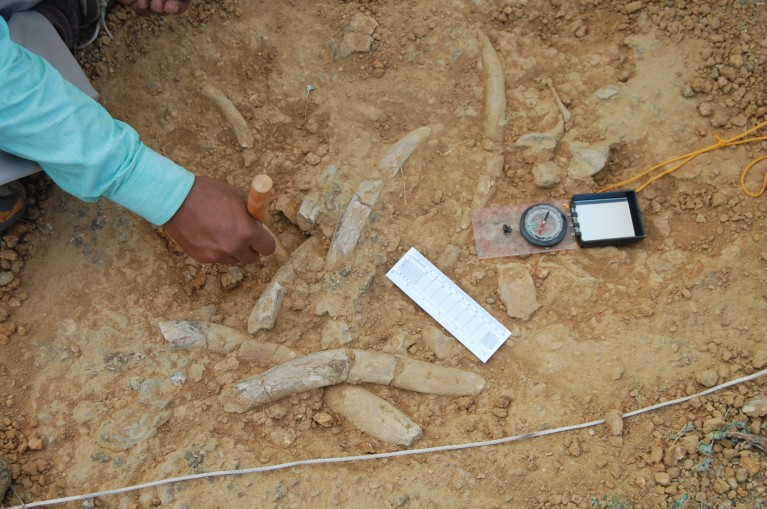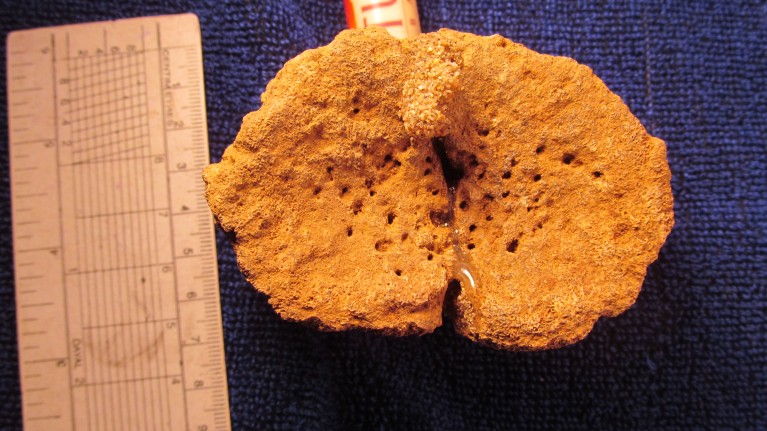
Fossilised whale along with other marine invertebrate fossils. Credit: Shiladri S. Das
Scientists have discovered fossilised vertebrae and ribs of a whale on the bank of a dried, seasonal river in Kutch of Gujarat1. The bones, dated between 23 and 20 million years, were found alongside fossils of boneless marine creatures such as snails, oysters and clams that lived in shallow sea.
“This is the first report of a whale fall fossil from India,” says lead author, and palaeontologist, Pritha Goswami at the Durgapur Government College in West Bengal. A whale fall is the carcass of a whale falling to the ocean floor.
The fossils date back to a time when the site in Kutch was under a tropical sea, in a warm and humid coastal environment. Geologically speaking, it was the early Miocene when whales, sharks, dugongs, and other marine creatures existed near Kutch. Most of these fossils from that time have been found in Kutch, but no previous studies have reported whale bones from this epoch.
“The bones poked out from sediment along the bank of Khari River where we were searching for tiny marine invertebrate fossils.” We unearthed four vertebrae and nine broken ribs, Goswami says.

Signs of Osedax boring on a vertebral bone surface. Credit: Pritha Goswami
Comparison with skeletons of other marine animals indicated that the bones belonged to an animal which is closely related to whales, dolphins and porpoises. Goswami’s team performed CT scans of the bones and found signs of boring holes that resemble holes made by Osedax-like worms – a feature of whale fall bones, because Osedax-like worms live in the nutrient-poor bottom of the deep sea. The researchers say that the whale, 3.7 feet long, probably died from a predatory attack in the deep sea. Like other whale falls, the carcass then decayed and bloated, floating to the surface where sharks gorged on its soft tissues.
Its carcass sank deeper and deeper until it landed on the soft seabed where it attracted more scavengers such as hagfish, crabs and lobsters which stripped the fleshy whale to its bones. Next, shrimps swarmed in to devour any remaining scraps of muscle, followed by the Osedax species which bored the bare bones.
The team, which included researchers Shiladri S. Das and Shanta Panja, says the bones are corroded in some places indicating that they were exposed to the open sea for some time. This suggests that ocean currents transported them from the deep sea to the 200-metre shallow sea near Kutch.
“The new record, which is 20 million years younger than the previously found whale fossils, suggests the presence of possible whale remains of Miocene age in this region,” says Sunil Bajpai, a palaeontologist at the Indian Institute of Technology Roorkee in Uttarakhand, who was not involved in the research. But, we need more evidence, such as skull bones, to confirm this, he adds.
Goswami says this study sheds light on past ocean ecosystems, and how animals adapted to the resources provided by dead whales in the deep sea during the Miocene.
